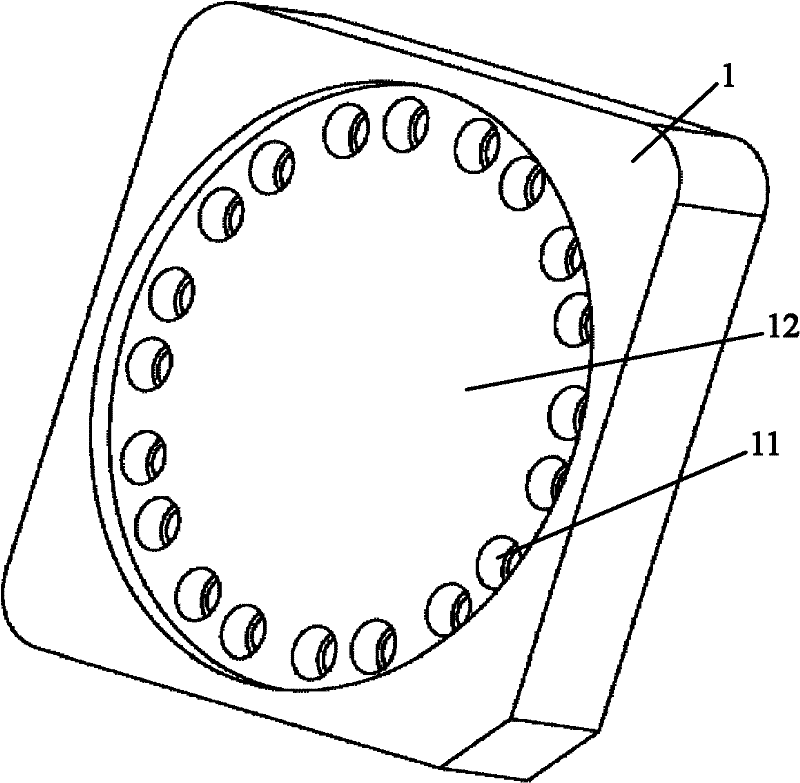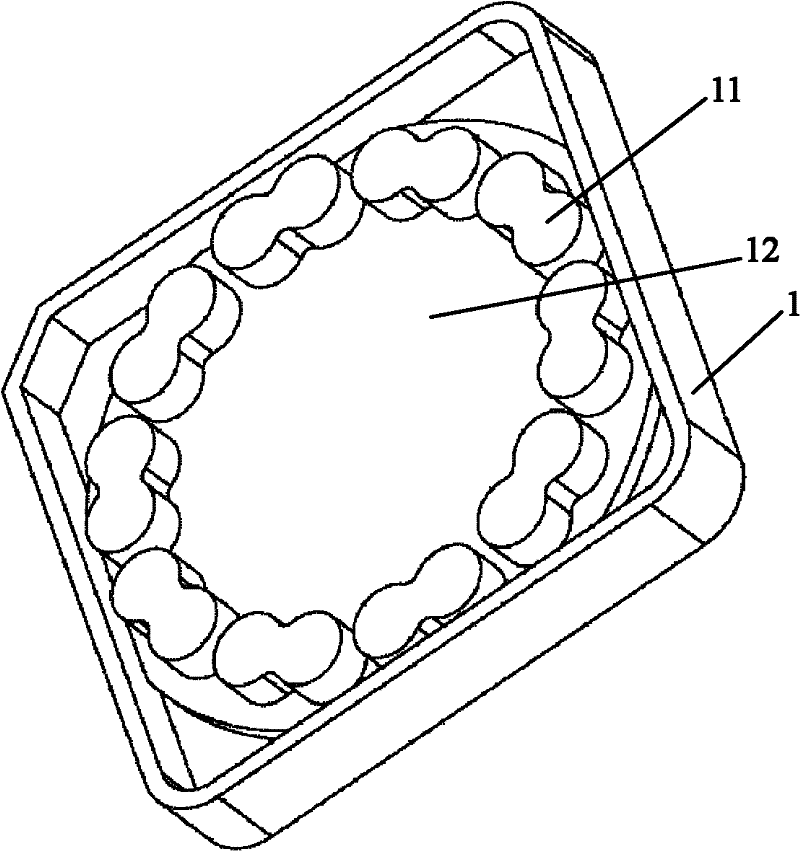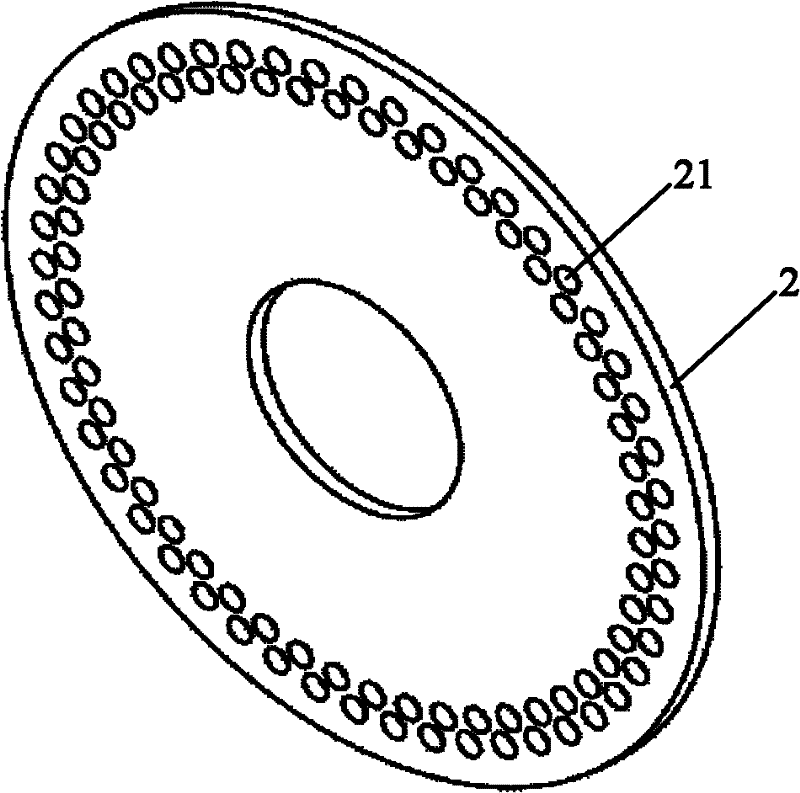High-flux dry biochemical chip
A high-throughput, chip-based technology, applied in the field of dry biochemical detection, biochemical chips, and dry-type biochemical chips of clinical laboratory analysis instruments and diagnostic reagents, can solve the problem of high requirements for operators, poor stability of opening bottles, reagents, etc. High consumption and other problems, to achieve the effect of improving detection efficiency, reducing the amount of detection samples, and reducing the amount of use
- Summary
- Abstract
- Description
- Claims
- Application Information
AI Technical Summary
Problems solved by technology
Method used
Image
Examples
Embodiment 1
[0025] The first layer: the diffusion layer, which promotes the uniform diffusion of the sample.
[0026] The second layer: filter layer, remove interference, made of nitrocellulose membrane material.
[0027] The third layer: the reagent layer, which makes the sample react with the reagent, which is made of freeze-dried powder reagent, and the reagent is a mixed reagent of Mg ion and AMP.
[0028] The fourth layer: the chromogenic layer, which makes the final reactants show different colors, and is made of freeze-dried powder chromogenic agent, which is p-nitrophenyl phosphate.
[0029] During the reaction, the sample to be detected penetrates through the sample injection hole 21 on the first layer of reaction hole cover plate 2, and enters the reaction hole 11 in the chip base 1 after being filtered by the second layer of filter membrane to react with the reagent of the third layer. Then continue to infiltrate downward and react with the color reagent on the fourth layer un...
Embodiment 2
[0032] The first layer: the diffusion layer, which promotes the uniform diffusion of the sample.
[0033] The second layer: filter layer, remove interference, made of nitrocellulose membrane material.
[0034] The third layer: the reagent layer, which makes the sample react with the reagent. It is made of freeze-dried powder reagent, and the reagent is glycylglycyl peptide.
[0035] The fourth layer: the color development layer, which makes the final reactants show different colors, and is made of freeze-dried powder color developer, and the color developer is γ-glutamyl-p-nitroaniline.
[0036] During the reaction, the sample to be detected penetrates through the sample injection hole 21 on the first layer of reaction hole cover plate 2, and enters the reaction hole 11 in the chip base 1 after being filtered by the second layer of filter membrane to react with the reagent of the third layer. Then continue to infiltrate downward and react with the color reagent on the fourth ...
Embodiment 3
[0039] The first layer: the diffusion layer, which promotes the uniform diffusion of the sample.
[0040] The second layer: filter layer, remove interference, made of nitrocellulose membrane material.
[0041] The third layer: the reagent layer, which makes the sample react with the reagent. It is made of freeze-dried powder reagent, and the reagent is LiOH dry reagent.
[0042] The fourth layer: the chromogenic layer, which makes the final reactants show different colors, and is made of freeze-dried powder chromogenic agent, and the chromogenic agent is copper tartrate.
[0043] During the reaction, the sample to be detected penetrates through the sample injection hole 21 on the first layer of reaction hole cover plate 2, and enters the reaction hole 11 in the chip base 1 after being filtered by the second layer of filter membrane to react with the reagent of the third layer. Then continue to infiltrate downward and react with the color reagent on the fourth layer until the ...
PUM
 Login to View More
Login to View More Abstract
Description
Claims
Application Information
 Login to View More
Login to View More - R&D
- Intellectual Property
- Life Sciences
- Materials
- Tech Scout
- Unparalleled Data Quality
- Higher Quality Content
- 60% Fewer Hallucinations
Browse by: Latest US Patents, China's latest patents, Technical Efficacy Thesaurus, Application Domain, Technology Topic, Popular Technical Reports.
© 2025 PatSnap. All rights reserved.Legal|Privacy policy|Modern Slavery Act Transparency Statement|Sitemap|About US| Contact US: help@patsnap.com



